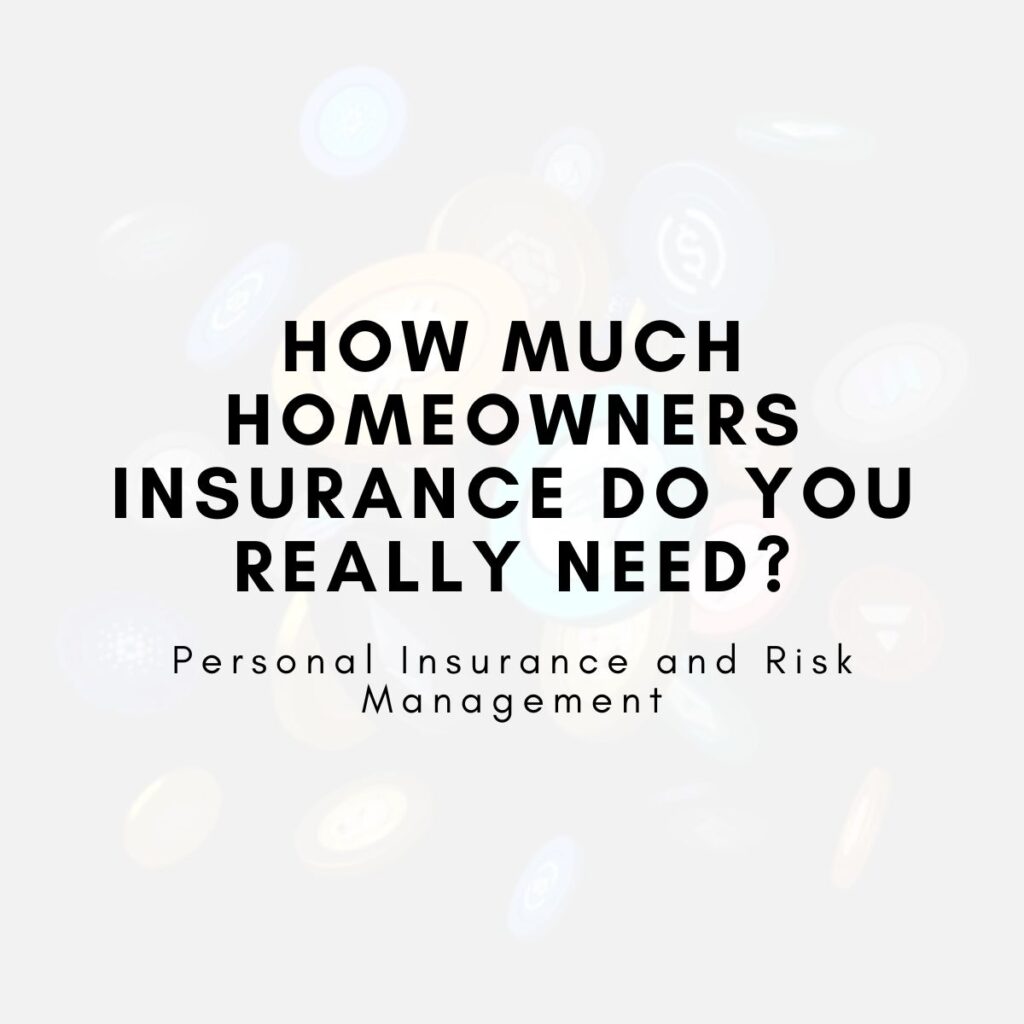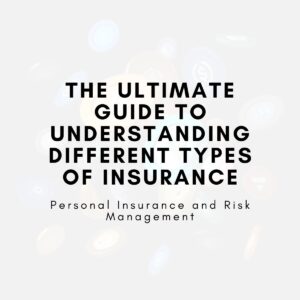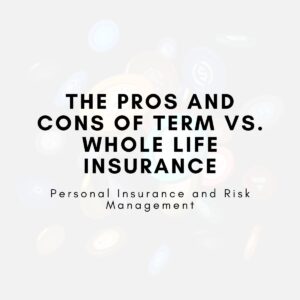
How much homeowners insurance do you really need?
The right amount of coverage depends on several factors, including the replacement cost of your home, the value of your personal property, and your liability risks. To determine the proper amount, assess your home’s replacement cost, consider additional coverage options like flood or earthquake insurance, and factor in your personal belongings and liability exposure. By understanding these elements, you can ensure that you’re adequately protected without overpaying for unnecessary coverage.
Summary Table: How Much Homeowners Insurance Do You Really Need?
| Section | Summary | Key Tips | Examples |
|---|---|---|---|
| What Does Homeowners Insurance Cover? | Homeowners insurance covers dwelling, personal property, liability, and additional living expenses. | Ensure your policy covers your home’s replacement cost, belongings, and liability risks. | Fire damage could cost $100,000 to repair your home; a thief could steal $2,000 worth of electronics. |
| How to Calculate Your Coverage Needs? | Calculate the replacement cost of your home, inventory your personal property, and assess liability. | Estimate replacement cost accurately; factor in the value of your personal items and net worth for liability. | A home valued at $350,000 may cost $400,000 to rebuild. A person with $1 million in assets should opt for $1 million liability. |
| Types of Homeowners Insurance Policies | Different policies include HO-1, HO-2, HO-3, and HO-5, offering varying levels of coverage. | Choose the right policy type based on your needs. HO-3 is the most common, while HO-5 provides the broadest coverage. | James opts for HO-1 for basic coverage, while Sarah chooses HO-5 for full protection. |
| Liability Coverage | Liability coverage helps protect against legal fees and medical expenses if someone is injured on your property. | Consider higher liability coverage if you have significant assets. | Natalie, with $2 million in assets, opts for $1 million liability coverage plus an umbrella policy. |
| Additional Coverage Options | Consider flood, earthquake, and high-value property insurance based on your location and assets. | Look into specialized policies if you’re in a high-risk area for natural disasters or own valuable items. | Mark buys flood insurance, while Lisa opts for earthquake coverage due to her location in California. |
| Conclusion | Homeowners insurance is essential for protecting your home, property, and financial security. | Regularly assess and update your insurance coverage to ensure it reflects changes in your property value. | An accurate inventory of belongings, including a $50,000 vintage car, ensures adequate protection. |
This table summarizes key points from the article on how much homeowners insurance you really need. It outlines the core areas of homeowners insurance coverage, how to calculate your coverage needs, types of policies, liability coverage, and additional insurance options. It also provides practical examples to help you understand how different scenarios might affect your insurance decisions.
Introduction
When purchasing a home, one of the most important decisions you will make is determining how much homeowners insurance to get. While homeowners insurance is often a requirement by lenders, it’s equally important to understand how much coverage you need to fully protect your investment, personal belongings, and financial security. Too little coverage could leave you exposed to financial risks, while too much could result in overpaying for unnecessary protection. In this guide, we’ll walk you through the key considerations for determining the right amount of homeowners insurance coverage for your needs and provide real-world examples to help you make an informed decision.
What Does Homeowners Insurance Cover?
Homeowners insurance offers protection for your home, personal property, and liability. It’s essential to know what your policy covers to ensure you’re adequately protected in the event of damage or loss.
Dwelling Coverage
This coverage helps pay for repairs or rebuilding of your home if it’s damaged or destroyed by a covered event such as a fire, storm, or vandalism.
Example:
If a fire damages your home, dwelling coverage would help cover the cost of repairs or rebuilding. For example, if the fire causes $100,000 in damages to your home, your dwelling coverage would help cover the cost to repair or rebuild.
Personal Property
Personal property coverage protects your belongings, such as furniture, electronics, and clothing, if they’re damaged, destroyed, or stolen.
Example:
If a burglar breaks into your home and steals your electronics, including a $2,000 laptop, personal property coverage will reimburse you for the value of the stolen items, up to your policy’s coverage limit.
Liability Protection
This provides coverage if someone is injured on your property and you are held responsible. It covers medical expenses and legal fees.
Example:
If a guest trips and falls in your home and requires medical treatment, liability protection can cover the medical costs and any legal fees associated with the incident. For instance, if the guest’s medical bills amount to $10,000, your liability coverage would cover the cost.
Additional Living Expenses (ALE)
If your home is temporarily uninhabitable due to a covered event, ALE coverage helps pay for expenses like temporary housing and food.
Example:
After a severe storm causes roof damage, your home becomes temporarily uninhabitable. ALE coverage can help pay for a hotel stay and meals for the duration of the repairs, which could amount to $4,000 in total expenses.
How to Calculate Your Coverage Needs?
Determining how much homeowners insurance you need involves assessing the replacement cost of your home, the value of your personal belongings, and the level of liability protection required.
Step 1: Estimate the Replacement Cost of Your Home
The replacement cost is the amount it would take to rebuild your home with similar materials, not the market value. You can use online calculators or consult an appraiser to get an accurate estimate.
Example:
If your home is valued at $350,000 but the cost to rebuild it would be $400,000 due to changes in construction materials and labor rates, your insurance coverage should reflect the $400,000 replacement cost.
Step 2: Account for the Value of Your Personal Property
Make a detailed inventory of your belongings, including furniture, electronics, jewelry, and collectibles. This will help you determine how much personal property coverage you need.
Example:
Suppose your personal property, including electronics, furniture, and clothing, is valued at $75,000. To ensure you’re fully covered, you should have a personal property coverage limit of at least $75,000 to replace everything if it’s damaged or stolen.
Step 3: Assess Liability Risks
Liability coverage should be sufficient to protect your assets in case of accidents. The typical range is between $300,000 and $500,000, but higher amounts may be necessary depending on your net worth.
Example:
If your net worth is $1 million, and you have significant savings or assets, you may want to opt for a $1 million liability coverage policy to protect yourself from lawsuits and claims.
Step 4: Add Additional Coverage if Necessary
Certain risks, such as floods, earthquakes, or high-value personal property, may require additional insurance coverage.
Example:
If you live in a flood-prone area, you may want to purchase separate flood insurance. Additionally, if you own valuable items like jewelry, a separate rider or endorsement may be needed to fully cover their value.
Types of Homeowners Insurance Policies
There are various types of homeowners insurance policies, each offering different levels of protection. Understanding which type is right for you is essential to ensuring you have the appropriate coverage.
HO-1: Basic Coverage
This is the most basic type of homeowners insurance and typically covers only specific risks such as fire, theft, and vandalism.
Example:
James lives in a low-risk area with minimal exposure to natural disasters. He opts for an HO-1 policy to save on premiums but only has coverage for specific risks like fire and vandalism.
HO-2: Broad Coverage
HO-2 offers coverage for additional risks such as damage from falling objects or snow and ice weight. It’s a step up from the basic policy.
Example:
Emily lives in a region prone to heavy snowfalls, so she chooses an HO-2 policy. This policy provides extra protection against risks like damage caused by fallen branches due to snow accumulation.
HO-3: Special Coverage
HO-3 is the most common type of homeowners insurance, offering coverage for your home and personal property against all perils except those explicitly excluded.
Example:
Andrew’s home is covered under an HO-3 policy, which includes protection from most risks except for exclusions like flood or earthquake damage. He’s confident that this policy will cover most events that could potentially cause damage to his home.
HO-5: Comprehensive Coverage
HO-5 provides the most extensive protection, covering both your home and personal property against all perils unless explicitly excluded.
Example:
Sarah chooses an HO-5 policy to ensure comprehensive coverage for her high-value belongings, including rare art pieces. The policy protects her property against all risks except those specifically excluded, such as war or neglect.
Liability Coverage: Protecting Your Assets
Liability protection is one of the most critical aspects of homeowners insurance. It helps cover medical expenses, legal fees, and damages if someone is injured on your property and decides to sue.
While the standard liability coverage in most homeowners policies ranges between $300,000 and $500,000, it may not be enough if you own significant assets. It’s advisable to purchase an umbrella policy to increase your coverage, especially if you have substantial savings, investments, or property.
Example:
Natalie, with assets exceeding $2 million, chooses a homeowners policy with $500,000 in liability coverage. To better protect her wealth, she purchases a $1 million umbrella policy to increase her total liability coverage to $1.5 million.
Additional Coverage Options
Depending on where you live and the type of risks you face, you may need to add supplementary coverage options to your homeowners insurance policy.
Flood Insurance
Standard homeowners insurance does not cover damage from flooding. If you live in a flood-prone area, it’s essential to purchase separate flood insurance.
Example:
Mark, who lives near a river, buys flood insurance to cover potential damage from flooding. His homeowners policy doesn’t cover floods, so this additional policy ensures he’s protected.
Earthquake Insurance
If you live in an area that’s prone to earthquakes, this coverage helps pay for repairs to your home if it’s damaged during a quake.
Example:
Lisa, who lives in California, opts for earthquake insurance because her region is known for seismic activity. If a major quake strikes and damages her home, her earthquake insurance will cover the repairs.
Personal Property Insurance for High-Value Items
If you own valuable items like jewelry, antiques, or artwork, consider adding special coverage for them to ensure they are adequately protected.
Example:
James owns a $50,000 vintage car. While his homeowners policy covers personal property, he purchases a rider for his vehicle to ensure it’s fully covered in case of theft or damage.
Conclusion
Choosing the right amount of homeowners insurance is crucial to protecting your home, belongings, and financial well-being. By assessing the replacement cost of your home, calculating the value of your personal property, and determining the right amount of liability coverage, you can ensure you’re adequately covered without overpaying. Don’t forget to consider additional coverage options like flood or earthquake insurance if necessary. With the right insurance, you’ll have peace of mind knowing that your home and family are protected.
Takeaways:
- Assess the replacement cost of your home, not its market value, to determine the right amount of coverage.
- Consider adding liability coverage to protect your assets in case of accidents.
- Factor in the value of your personal belongings and add special coverage for valuable items if necessary.
- Additional insurance policies like flood or earthquake coverage may be required depending on your location.
- Review your policy regularly to ensure your coverage keeps up with changes in your home’s value and personal property.




